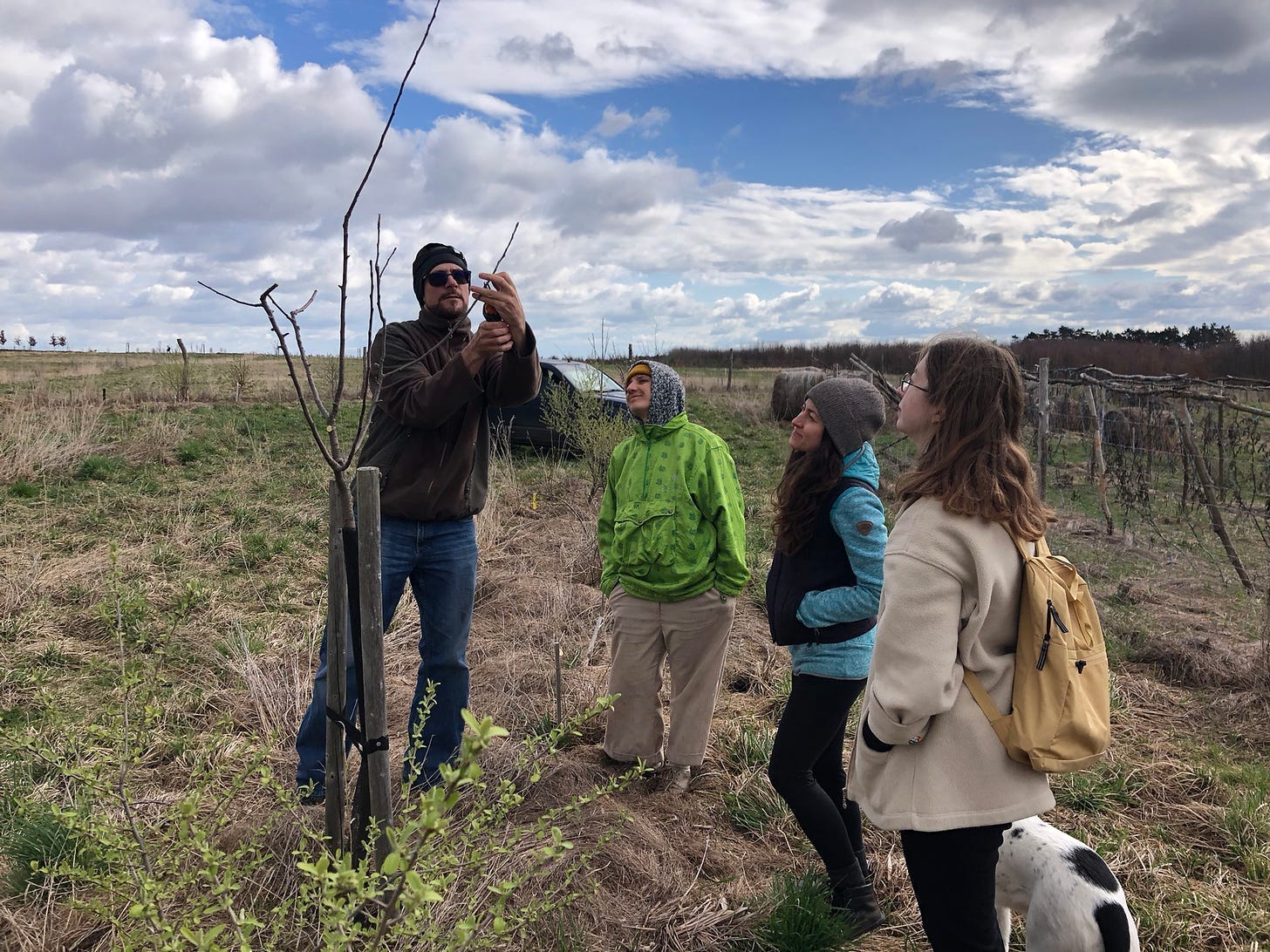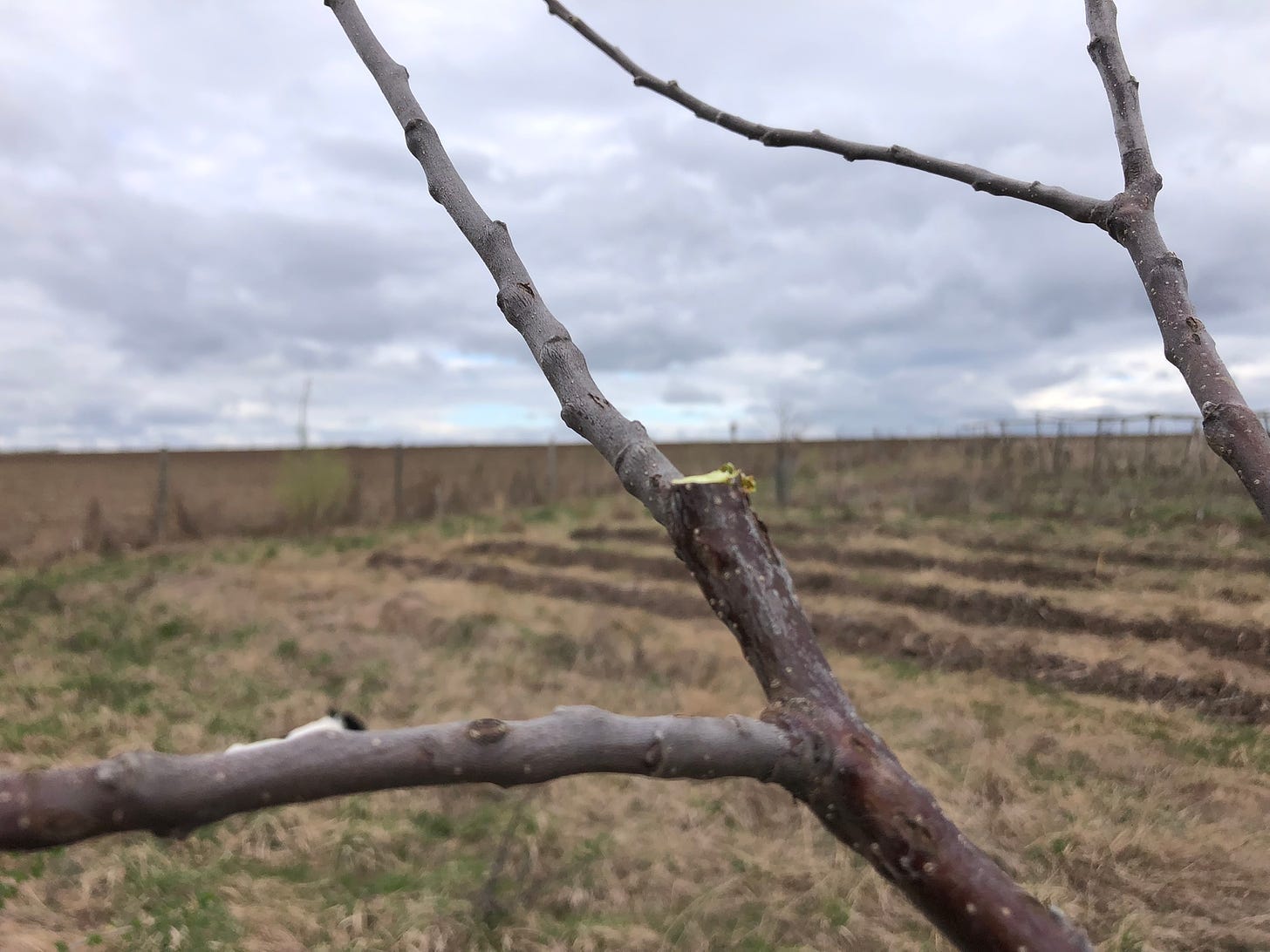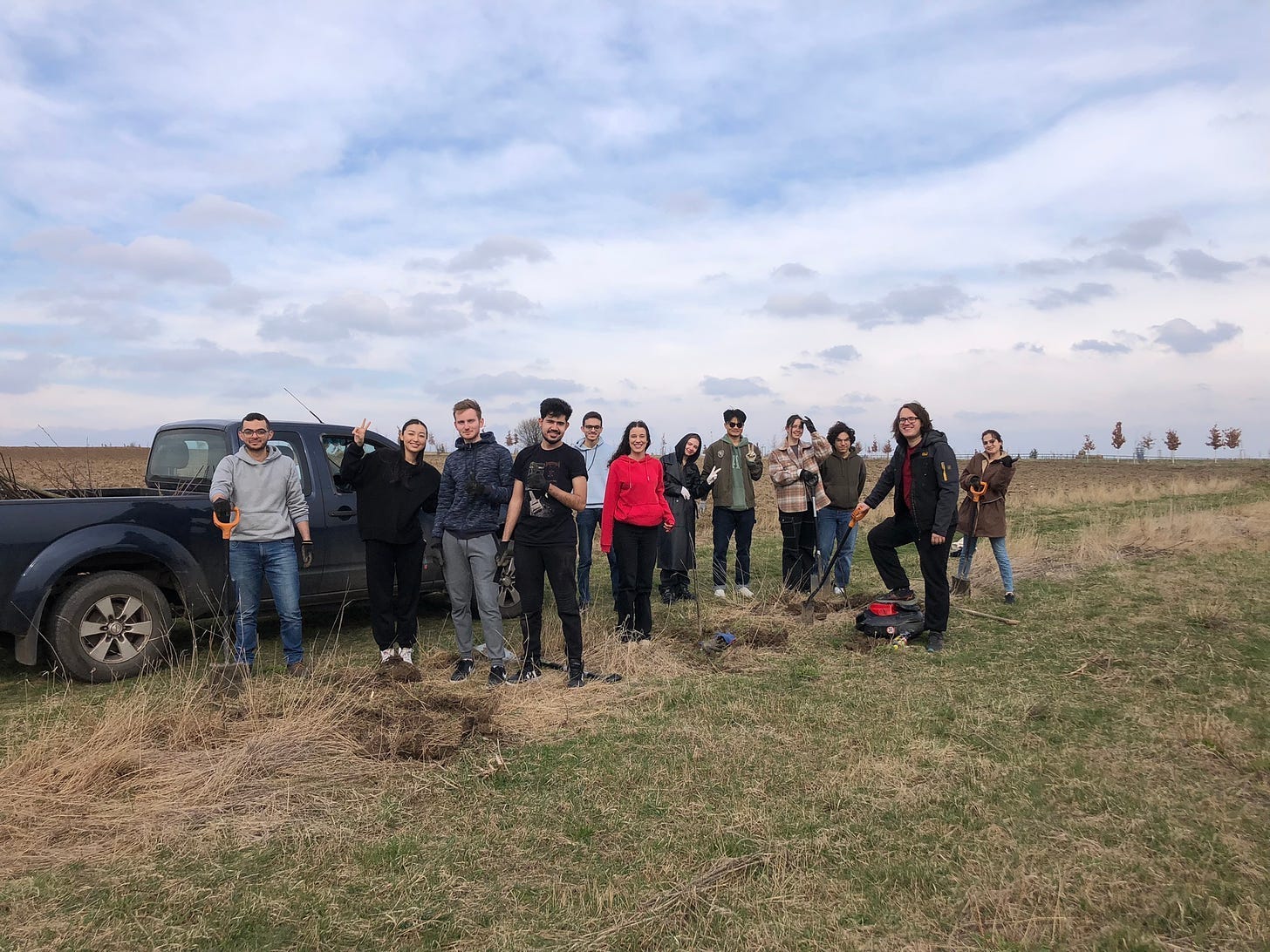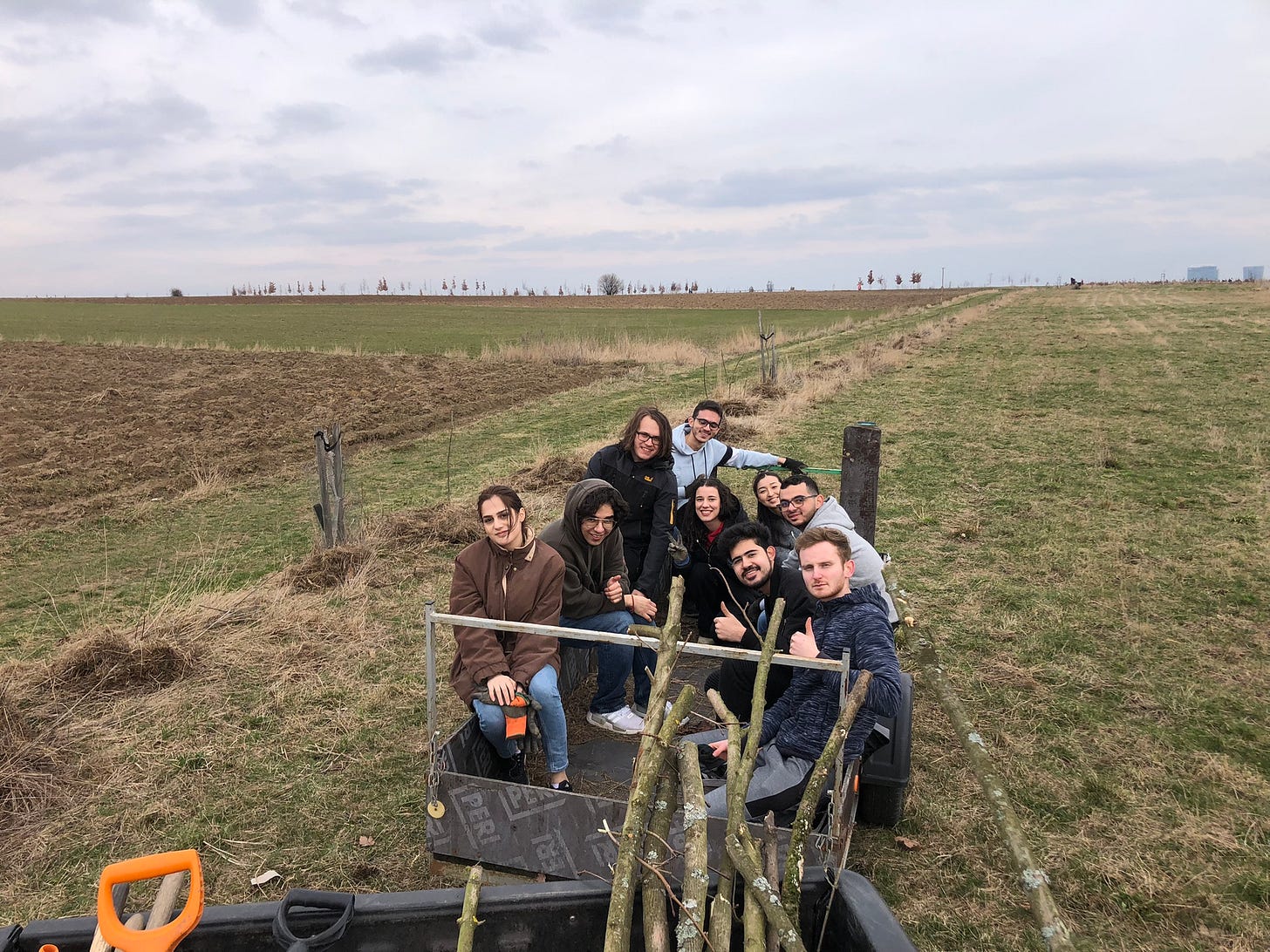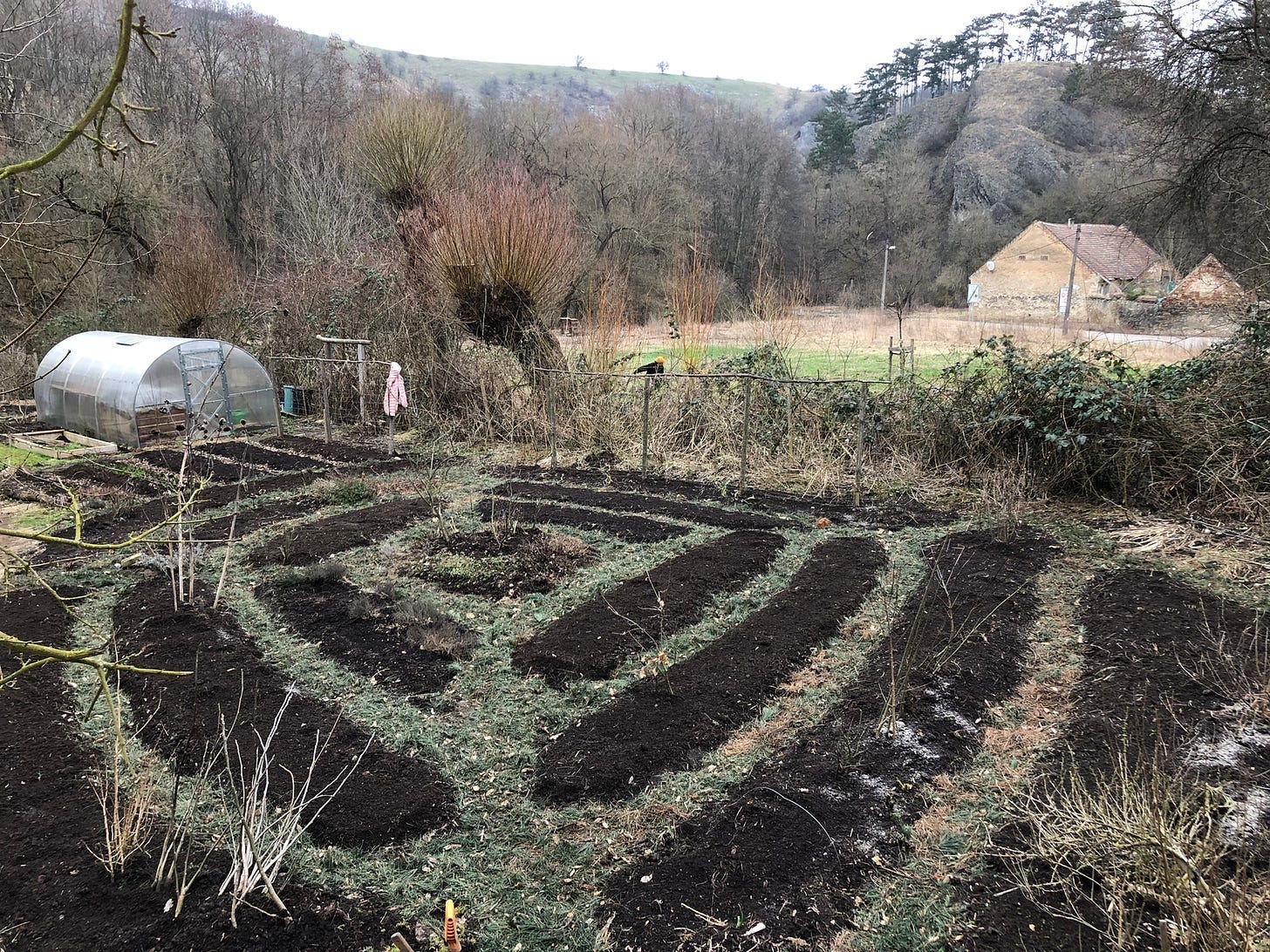Spring comes two weeks later here in Prokop’s Valley compared to our young orchard on the hill above, not more than two miles away as the owl flies. Our friend, Olda, gave us a lesson pruning the young fruit trees last weekend. He went ahead and pruned all seventy old varieties of peach, apricot, apple, pears, cherries and plums. Because of the warm spring, some of the pitted fruits were already flowering, a sign that they’re ready for the first pruning. Apples and pears can be pruned anytime they don’t have leaves.
Last year Olda taught us a trick. Prune the outward branches to an upward facing bud, knowing that that one will shoot up and the bud underneath it will grow out at less of an angle. The angles of the branches are very important to stimulate fruiting.
This is exactly what we hope for. Now we just prune out the vertical shoot.
The lower angle of the outward branch allows more light into the crown of the tree and also more apt to give fruit than a vertical branch.
I’ve taught an English for IT class the last ten years at the Czech University of Sciences. I invited my students to come help me plant around sixty walnut trees the other weekend on the northern border of the orchard. Twelve students from around almost as many different countries came to help. Most had never planted a tree before but a few told me how they used to help their grandparents in their gardens, harvesting strawberries and potatoes. By the end of the day they were professionals. Thank you all for the help!
The main garden slopes north and rests on the north side of a large hill with massive, hundred-year-old spruce and pine. We live at the convergence of two valleys, what you could call a ‘frost pocket’. Cold air slides down the hill from above and nestles into the narrow bottoms.
We add at least six weeks to our season by having a greenhouse, which is now packed to the gills with young vegetable starts and heated with horse manure. We’ve run out of space, so Honza and I built a raised bed with a frame for a window to allow sun in, also called a cold frame. We used planks of exotic hardwood that were being thrown away, which should last at least another five to ten years. We covered the wood on the inside with scrapped black plastic that will keep the wood from direct contact with soil.
We then filled the bed with dried willow logs. I don’t recommend doing this with fresh willow or you’ll end up with a bed of willow shoots. The dried logs will become a forest floor within a few years, a giant sponge of water and mycelium. We added a couple wheel barrels of horse manure, hopefully enough to generate some heat. It was topped off with compost that the chickens made to smooth out the top so we can move starts out to the purgatory of the cold frame before transplanting in the garden. At the start of the season ‘hardening off’ plants can reduce the transplant shock especially in our cool microclimate. After the middle of May when it’s warmed up outside it’s no longer necessary.
We’re going to need to get it finished because there’s no where else to put trays of starts.
Tomorrow Lucie’s grandfather will teach me once again how to braid willow branches into a pomlázka. On Easter morning Czech men playfully chase the women around, spanking them on their behinds. The youth and vigor of the young willow branches is imparted onto the women to make them young, an old fertility ritual. A tradition that most likely outdates Christianity. Think what you will about it, but there’s something profound in being taught something from an elder who learned that skill from his father who learned it from his father for who knows how many generations. It was never written down, or learned from a video on the internet.
Though he’s still climbing up ladders shaking plum trees for liquor and always has a thick book on the windowsill, last year Babička had to gently remind Děda how to make his pomlázka in which he would spank her with. Each year I play along. My wife, her grandma, and my mother-in-law would be sad if I didn’t. I even enjoy it.
-Brett




